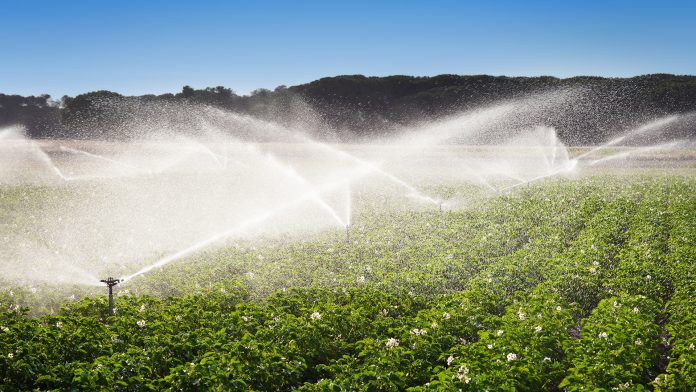Scientists at University of Illinois have identified solutions that could lead to technological advancements in precision crop irrigation.
With the threat of water scarcity and the challenge of feeding a growing population, it is essential that crop irrigation is optimised.
Overwatering can deplete water supplies and result in polluted runoff, while underwatering can result in worse crop performance. Despite this, farmers are unlikely to use science-based tools to aid decision making in crop irrigation.
The new study has identified obstacles and solutions to enhance implementation of crop irrigation decision support tools at the field scale.
“We wanted to offer our perspective on how to achieve field-scale precision irrigation with the most recent and advanced technologies on data collection, plant water stress, modelling, and decision-making,” commented Jingwen Zhang, postdoctoral researcher in the Department of Natural Resources and Environmental Sciences (NRES) at Illinois.
Zhang explained that most farmers depend on visual observation and crop calendars, and that the data and technology that exist are not utilised to their full potential. For example, some fields are equipped with soil moisture sensors or cameras that identify changes in crop appearance, but there is not enough of them to deliver precise information across fields. Satellites can monitor vegetation from space, but the spatial and temporal resolution of satellite images is often too large to help make decisions at the field scale.
Kaiyu Guan, assistant professor in NRES, Blue Waters professor with the National Center for Supercomputing Applications, and project leader on the study, established a method of fusing high-resolution and high-frequency satellite data into one integrated high spatial-temporal resolution product to assist in tracking soil and plant conditions.
“Based on remote sensing fusion technology and advanced modelling, we can help farmers get a fully scalable solution remotely,” he said. “That’s powerful. It can potentially be a revolutionary technology for farmers, not only in the US, but also smallholder farmers in developing countries.”
The research team also looked into the difficulties concerning farmer adoption of current decision support tools. As existing products are centred around less than ideal data sources, Guan explained that producers are reluctant to change from traditional methods to techniques that may not offer greater reliability.
Trenton Franz, associate professor at the University of Nebraska-Lincoln (UNL) and a co-author, explained that farmers would be more likely to implement precision crop irrigation decision tools if they are precise down to the field scale, adaptable, and easy to use.
The researchers are currently developing technologies to fill this need and are currently testing their technology in Nebraska.
“We are pretty close. We have real-time evapotranspiration data, and we are adding the soil moisture component and the irrigation component. Probably in less than a year this will be launched as a prototype and can be tested among the farmer community,” Guan added.









